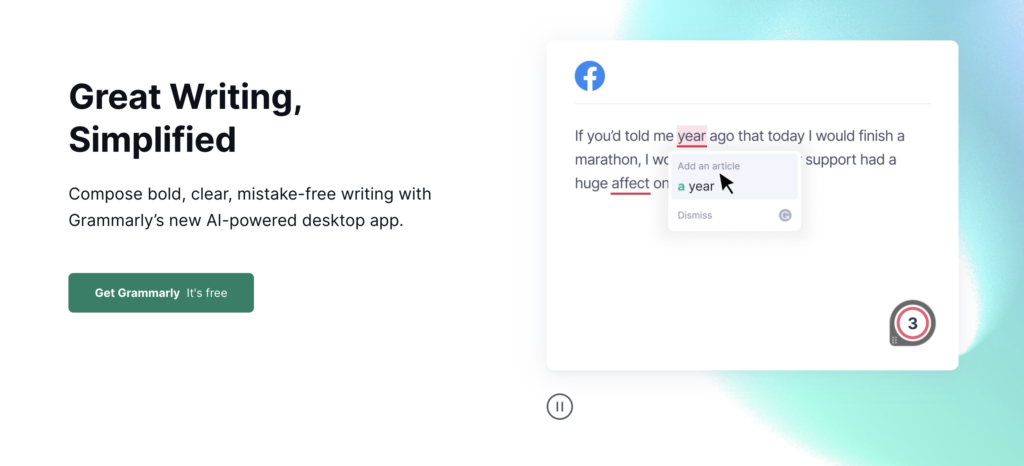In the startup world, there is a term, product-market fit, that drives the narrative of whether or not a startup finds success.
When you go to sites like Indie Hackers (amazing site) you’ll often find people saying that they can’t get any traction or money until they achieve product-market fit.
And this makes perfect sense.
You have a product that doesn’t succeed until you find the right market for it.
But it’s wrong.
And it’s driving many people to build a business the wrong way.
Let’s look at dating.
More specifically my friend.
The Product of Attraction
My good friend is terrible with women.
Terrible at getting their attention. Terrible at getting them to recognize him.
Just overall bad.
Now, technically this should be the complete opposite because the product (him) is pretty solid.
Decently attractive. Super nice. A doctor. Life is together.
A great product!
So what’s the problem?
When attracting someone it’s not about the product. They don’t care about the product.
They don’t even know the product exists and that’s where people get caught up.
The day I met my wife, I have no idea what she was thinking when she woke up, but I can tell you for certain she didn’t have a vision of me in her head.
She didn’t know I even existed.
But she did have a vision of what she wanted.
She could tell you what it was. I can’t.
I just know the vision wasn’t me, the physical product.
The vision was more along the lines of what her life would be like with someone else in it.
You see, that’s what the product should be doing.
You Need to Match the Vision
Back to my friend.
He’ll get frustrated when he sees a woman at a bar walk away with another man.
Before he used to say it was because of the car the guy drove.
Then he got a nice car and nothing changed.
Then it was because the other man had a table so we got tables.
Nothing changed.
One time he even got mad at me because I was doing an okay job of talking with women.
What was the difference between him and me?
I made them laugh.
That’s all I wanted to make them do.
I wanted the woman to have a good time and enjoy my company.
My friend wanted to talk about work or spend a lot of time complimenting them.
I just wanted to have fun.
That was the only difference.
If the woman’s vision was “I just want to have a good time” then I was able to match that vision.
That’s all that mattered.
And that’s how it has to be with your business.
People Only Buy Improvement
The only thing people buy is improvement.
This is one of the most important things to remember when building any kind of business.
People don’t buy your ideas. People don’t buy your marketing.
They only buy improvement and that improvement starts with a vision.
You have to show them a vision of the future that matches theirs or maybe give them a vision that they didn’t even know was possible.
Your product doesn’t matter.
That’s painful for me to say because I love making products. I love the act of creating.
But the products themselves don’t matter.
The products are just tools to help people get to the vision that they want.
And if you can’t match that vision then you lose.
It’s as simple as that.
That’s why my only goal when meeting a woman was to get her to laugh.
Life is better when you’re happy. That’s an improvement!
Now, did that always work? Of course not.
There are other things that go into dating, but I needed a starting point.
The women that found that laughter was an improvement talked to me a little longer than those that wanted something else.
You could say that was the product-market fit if you really want to be a stickler for these terms.
So why do relationships and businesses fail?
Because something isn’t matching the vision any longer.
How to Find the Vision aka How to Find Product-Market Fit
Alright, this one is going to be tough to say, but since we’re over 700 words deep into this conversation I feel that we are basically best friends.
Alright, here I go.
Most things that you build do not require you to find the vision. It’s just not worth your time.
For example, I have an idea to create an AI prompt site (I wouldn’t be the first one) that has some cool features.
I don’t need to think of what vision it’s trying to match because it’s just a basic utility.
If you’re interested in getting better with AI prompts then you would find the site enjoyable.
Don’t get me wrong, I could find the vision and run with it, but sometimes we just want to build utilities and that’s fine.
Those aren’t meant to be world-changing, trillion-dollar businesses.
However…
If you aim to build a business that lasts a lifetime and more, then you need to find the vision your audience desires.
Apple, Nike, and Disney are the obvious Kings of this.
They will be around after we die because of the vision they follow (assuming leadership always sticks with it).
[[Today’s Exercise: Find the vision of each of those companies.]]
Okay, so how do you find the vision that you’re looking for?
Step 1. It’s Always Basic
This is the HARDEST part of all of this.
We tend to think that big success in business means big complexity.
But really it’s the opposite.
With Apple, some people buy them because of status (see the improvement?). That’s simple.
Other people buy from them because of ease of use (see the improvement?). That’s simple.
To make it even easier for you, people only want a couple of things in life:
- More money
- More time
- More sex (call this love if you want)
- More health
- More enjoyment
- More status
That’s it. There is no reason to think beyond that.
These are the improvements that all people want.
You’ll try your best to say that YOUR thing is more than that and that’s okay. It can try to be more than that, but there really isn’t anything more than that.
Step 2. Find Who
What you’ll see with each of these steps is that they really don’t need to go in order because life doesn’t work that way.
You might come across a group of Nuns that you want to help which means that you did Step 2 before you did Step 1.
And that’s okay.
Because then you’d just go to step 1, do it, and then jump to step 3.
But if you have no idea who you want to help, then guess what? You can start at step 1 and say “I want to help people have more time”.
Then step 2 is figuring out what people are desperately looking for more time right now.
See, no reason to try and complicate this shit.
Step 3. Find What Blocks Them
This is where the product comes into play.
Everyone has a vision of a better future for themselves.
And most of them are trying to get it, but they can’t.
They can’t because something is blocking them.
This is why self-help is such a massive industry.
“The problem is that you…blah blah blah.”
So if you can understand what blocks someone from attaining their vision then you have everything that you need.
- You know who they are
- You know what they want
- You know what is preventing them from getting it
If you knew those 3 things don’t you think you could come up with a solution for them?
That’s what this whole game is about.
But people often do it backward.
They come up with solutions to things that don’t exist.
Here, take this product, it will help.
“But that’s not fixing the thing that’s blocking me.”
And what’s cool about this approach is that you can find different audiences and tailor your message to them.
Let’s take Grammarly for example. They probably have several different audiences.
But here’s one that you might not think about.
The prolific writer.
Someone that wants to write a ton and they don’t have an editor.
Someone like me.
I’d rather spend most of my time writing. I’m not a fan of editing.
Especially the basic things like spelling and grammar.
It’s a roadblock for me. The more I have to edit, the less time I have to write.
But with Grammarly, I can just write and I know Grammarly will do a fairly decent job of taking care of the basic edits for me.
It makes writing more enjoyable for me knowing that I can focus on writing.
But this is also where it gets tricky for people because the message has to match the vision that the person reading it wants.

Great Writing, Simplified.
That’s a pretty cool headline, but guess what?
It doesn’t apply to me.
I’m not worried about great writing. Great writing isn’t the vision that I have.
It’s more writing.
So this headline wouldn’t appeal to me.
But that’s something you have to be okay with. Because you can only deliver a single message at a time and that single message is going to appeal to a single audience.
Doing everything right to talk to a woman doesn’t matter if the woman is happily married.
The Message-Vision Fit
What you’re really looking for is the message to vision fit.
That means your message, the thing you’re telling your audience, matches the vision they have in their heads of what they want.
I don’t even need a product to make this work.
I just need the right message to match the vision that you have.
That’s why Product-Market Fit (PMF) gets so many people in trouble.
When they first launch and it doesn’t work, many think they need to improve the product.
But people don’t sign up (or not sign up) because of the product. They don’t even know how the product works!
Imagine you had to create a landing page with nothing but words.
Is it possible to get people to sign up for your product with just that?
If not, then you know you have a messaging problem. Why do they need to see the interface?
Imagine showing them this and saying it’s going to make them a better writer or more productive.

When things aren’t working it’s not because of your product unless somehow you magically trick people into signing up for something that doesn’t help them achieve their vision.
When things aren’t working it’s because you lack a Message-Vision Fit.
I follow all of the Twitter guru advice and have been for 6 months, but nothing is working.
I use the templates, the hooks, the memes, and every other trick.
But nothing.
I get crickets.
Have you tried a better message?
It’s why some people can get away with tweeting 3x a week while others need to post 100x a day.
A Misunderstanding
Let’s assume your audience is willing to spend money but they are spending it on your thing.
You know how great your product is and how much it will help people.
You keep telling them how great it is, but they still don’t buy it.
It’s because they have a misunderstanding of how your product is going to lead them to the vision of themselves that they want.
Before you go back to the drawing board with that thing you worked so hard on, go back to the drawing board and tweak the message.
Find the vision that your audience has and let them know you can help them achieve it.
If you want to see how to put all of this together then check out my free 5-Day Bootcamp below.
